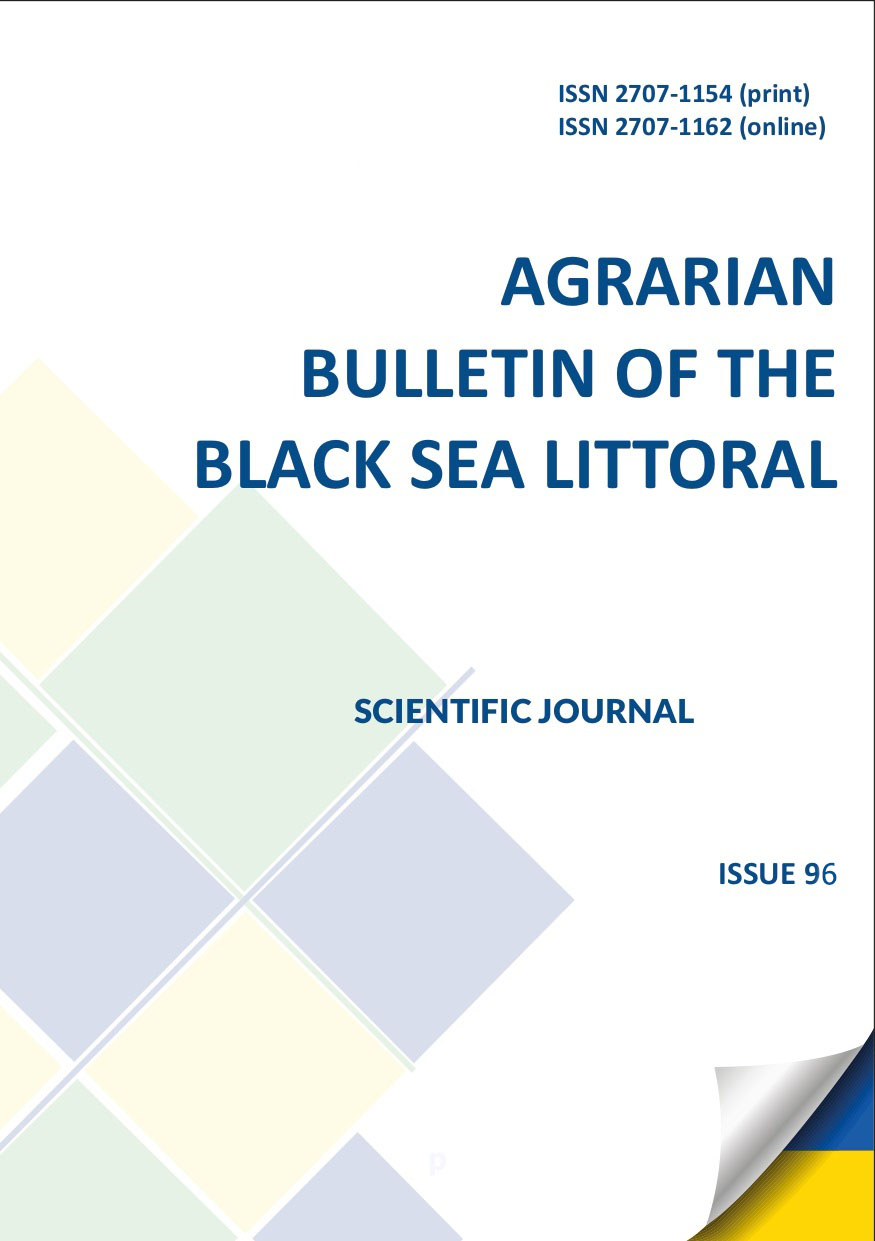THE INFLUENCE OF FHYTOPREPARATION “CARDIOPHYL” AND “PHYTOHOL” ON THE BIOCHEMICAL INDICES OF BLOOD OF CATS WITH ISOLATION STRESS
DOI:
https://doi.org/10.37000/abbsl.2020.96.04Keywords:
herbal supplements, Cardiofil, Phytohol, isolation stress, biochemical parametersAbstract
The article presents data on the study of the influence of the Cardiophil and Phytohol phyto-additives on the biochemical parameters of cats' blood under conditions of isolation stress. It is established that in stress conditions animals have a stress reaction, which is accompanied by an increase in heart rate and respiratory rate, as well as the development of hypertension, which causes post-loading on the cardiovascular system and subsequently leads to changes in blood vessels and causes cardiovascular disease. vascular and pulmonary insufficiency, namely in cats blood increased urea by 26%, creatinine by 11%, total protein by 10.5%, glucose by 17.5%, LDH (lactate dehydrogenase) by 11.5%, at the same time decreased the activity of enzymes ACAT by 20%, ALAT by 9.4%, alkali phosphatase 9% 9% creatine and tryhletsyrydiv 9%, 3% sodium. Such changes in the biochemical parameters of the blood are explained by the fact that the adaptogenic action of the phyto-additives improved the function of the liver (Biloxinetic, lipolytic, etc.), which led to a decrease in the lipomobilizing effect in the animals of the experimental group. This is indicated by a decrease in triglycerides and creatine phosphokinase. This indicates a decrease in the stress response of the experimental animals, as well as an improvement in the function of the urinary system, in particular the kidneys. It should be noted that all the above biochemical parameters of blood fluctuated within physiological normative values.
References
2. Барышникова Г.А., Чорбинская С.А., Степанова И.И., Блохина О.Е. Дефицит калия и магния, их роль в развитии сердечно – сосудистых заболеваний и возможность коррекции //Consilium medicum 2019 / Том 21/ №1 С. 67 – 73.
3. Жигулина В.В. Биохимический ответ организма на стресс // Верхневолжский медицинский журнал. – 2014. вып. 4. Т.12.– С . 25 – 30.
4. Мітченко О.І., Лутай М.І. Дисліпідемії: Діагностика, профілактика та лікування. – К.: Четверта хвиля, 2007. – 56 с.
5. Солодков А.П. , Беляева Л.Е., Лазуко С.С. Стресс и артериальная гипертензия. // Практикуючий лікар, №3, 2013 С. 78 – 80.
6. Diachenko, L. M. & Stepchenko, L. M. (2018). Erytrocytarna systema krovi shhuriv na tli zastosuvannja kormovyh dobavok guminovoi' pryrody za kombinovanogo stresu [Erythrocyte system of rat blood during the application of fodder additives of humic nature for combined stress]. Theoretical and Applied Veterinary Medicine, 6 (3), 34‒38 (in Ukrainian). https://doi.org/10.32819/2018.63007
7. Lapshina L.A., Zolotaykina V.I. Oxidative stress in acute heart failure and the role of the antioxidant quercetin in its correction. International Journal of Medicine, 2009, vol. 15, no. 3, pp. 45–51 (in Ukrainian).
8. Mehta J., Dinerman J., Mehta P. et al. Neutrophil function in ischemic heart disease // Circulation. – 1989. – Vol. 79. – P. 549-556.
9. Naruko T., Ueda M., Haze K. et al. Neutrophil infiltration of culpit lesions in acute coronary syndroms // Circulation. – 2002. – Vol. 106. – P. 2894-2900.
10. Paronik, V., Stepchenko, L., Diachenko, L., Lievykh, A., & Shevtsova, A. (2015). Vplyv korvitynu ta gumilidu na stan oksydantno-antyoksydantnoi’ systemy shhuriv na foni vvedennja adrenalinu [Influence of corvitin and humilid on the oxidantantioxidant system in rats after injectoin of adrenalin]. Biologija Tvaryn, 17(4), 109–114 (in Ukrainian). http://aminbiol.com.ua/20154pdf/15.pdf
11. Suslova, N. I., Shulzhenko, N. M., Semyonov, O. V., Shkvaria, M. M., Panasenko, E. A., Holubyev, O. V., Chudinova, E. A. (2018). Diagnosis and treatment characteristics of acute renal failure in dogs. Science and Technology Bulletin of SRC for
Biosafety and Environmental Control of AIC, 6(2), 72–77. (in Ukrainian)
12. Susla O.B. Age-related changes in the heart muscle metabolism in rat adrenal dynamics of myocardiodystrophy. Medical Chemistry, 2004, vol. 6, no. 1, pp. 41–47 (in Ukrainian).
13. Summerfield, N. J., Boswood, A., O'Grady, M. R., Gordon, S. G., DukesMcEwan, J., Oyama, M. A., Smith, S., Patteson, M., French, A. T., Culshaw, G. J., BrazRuivo, L., Estrada, A., O'Sullivan, M. L., Loureiro, J., Willis, R., & Watson, P. (2012). Efficacy of pimobendan in the prevention of congestive heart failure or sudden death in Doberman Pinschers with preclinical dilated cardiomyopathy (the PROTECT Study). J Vet Intern Med., 26(6), 1337–1349.
14. Tilley, P. L., Francis W. K., Smith J., Oyama M. A. (2008). Manual of canine and feline cardiology copyright by Saunders, an imprint of Elsevier Inc. (Fourth edition) 105–106.
15. Ware, W. A., Keene B. W. (2000). Outpatient management of chronic heart failure. In Bonagura JD (ed). Current veterinary therapy XIII. Philadelphia: WB Saunders. 748–752.


